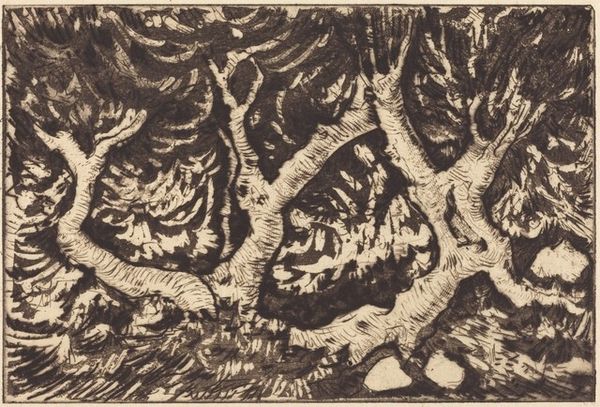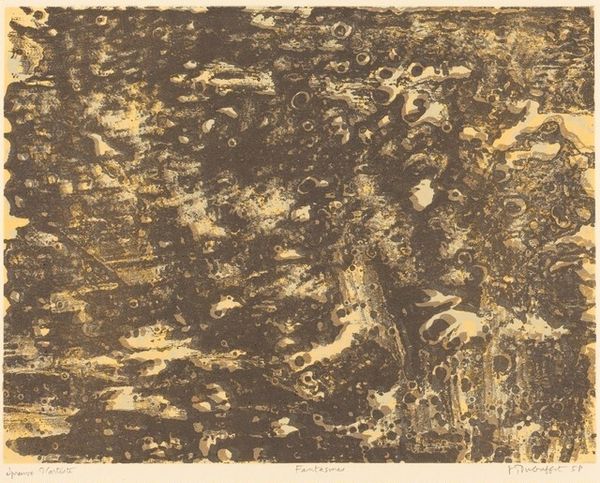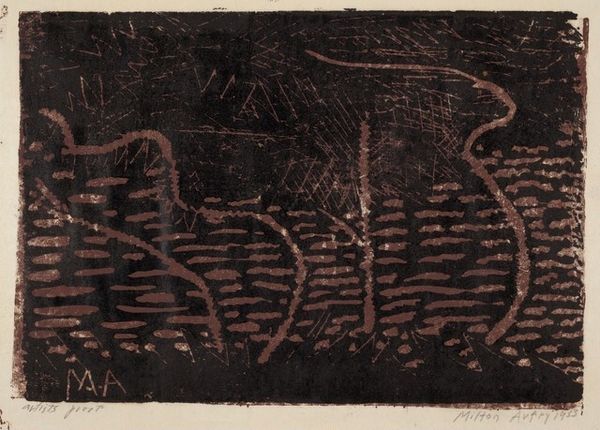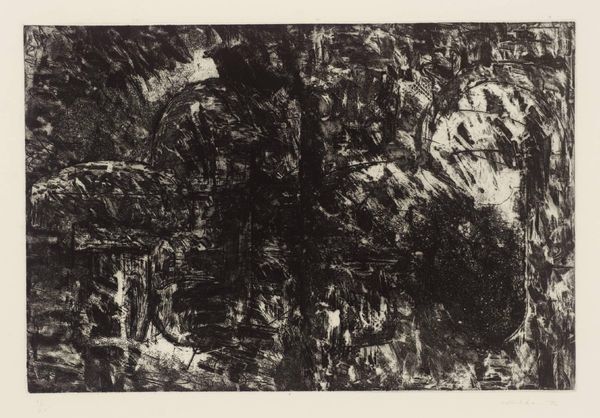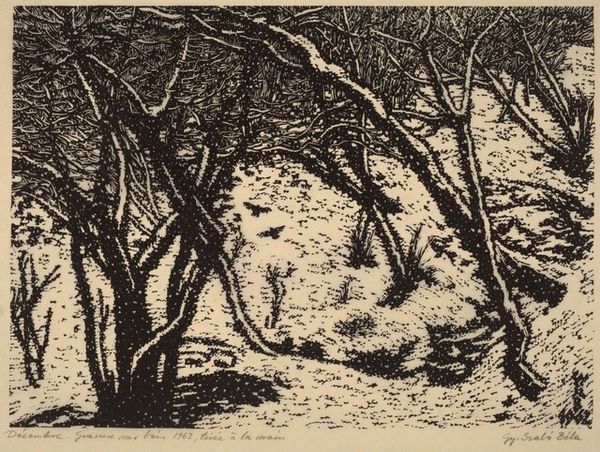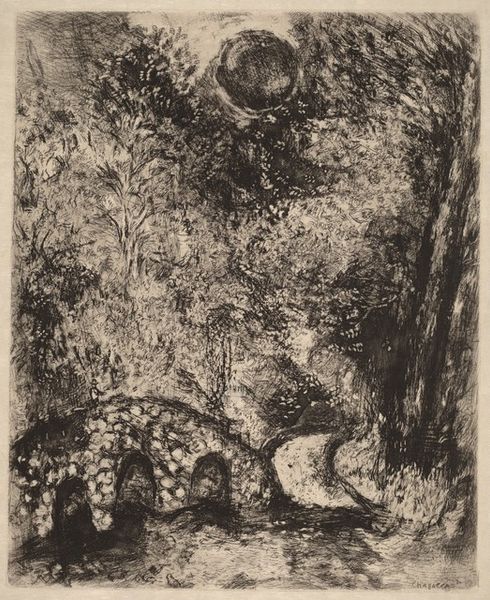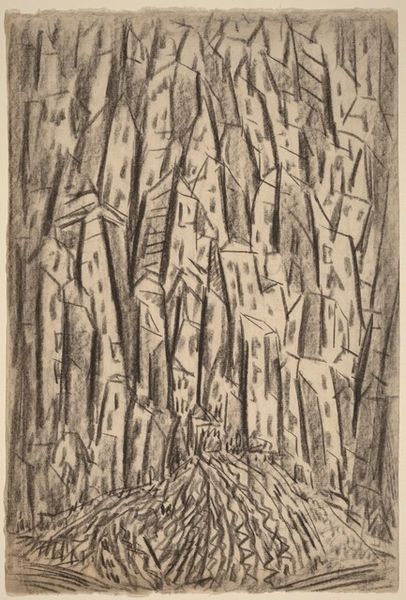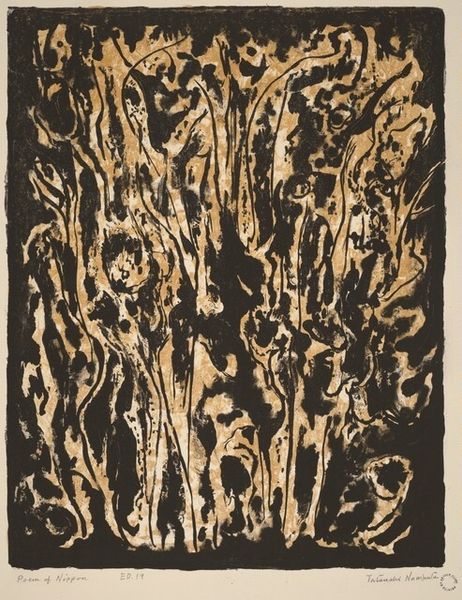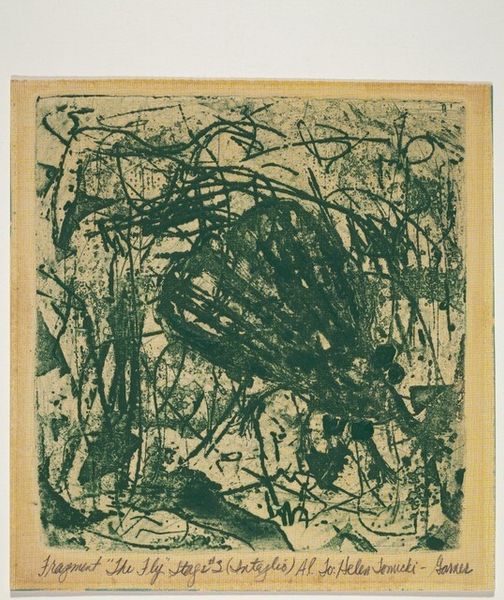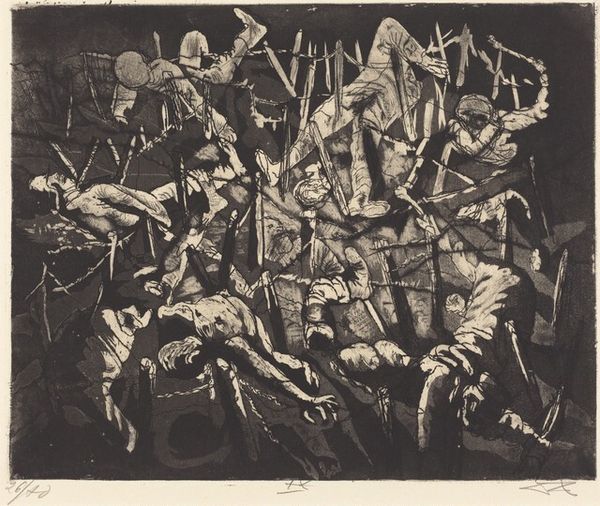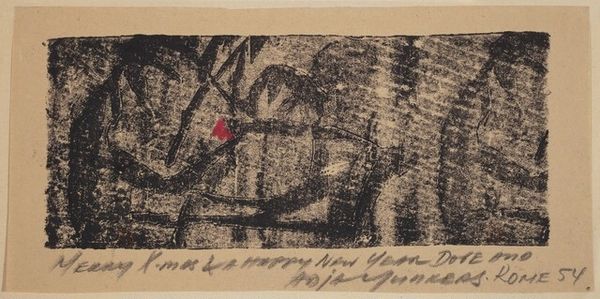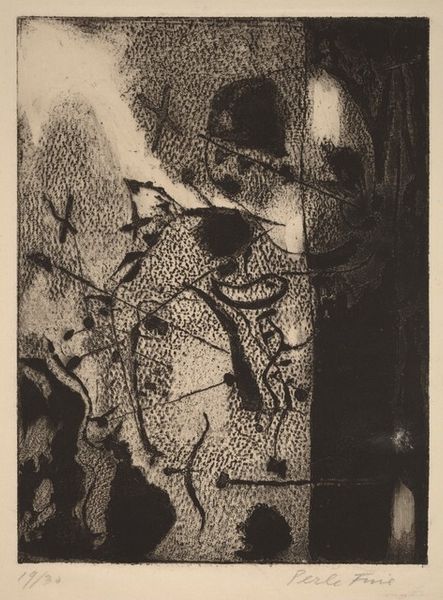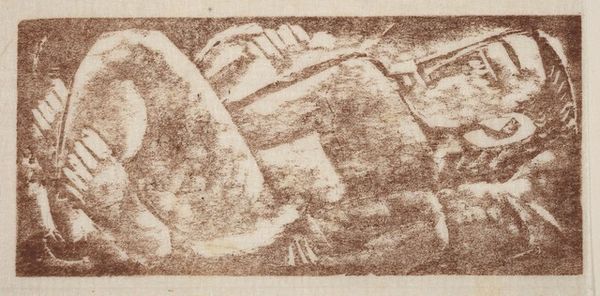
graphic-art, print
#
graphic-art
# print
#
landscape
#
german-expressionism
#
expressionism
#
abstraction
Dimensions: sheet: 13.3 x 21 cm (5 1/4 x 8 1/4 in.)
Copyright: National Gallery of Art: CC0 1.0
Editor: Here we have Christian Rohlfs's "The Beast," a 1925 print that plunges the viewer into what feels like a dark and fractured landscape. The stark contrast between the dark brown and negative space creates an almost oppressive atmosphere. What formal qualities strike you when you view this print? Curator: Indeed, the starkness is key. Notice how Rohlfs eschews traditional notions of representation. We see an abstraction of form, a landscape perhaps, but delivered through a reduction to its most essential visual components. Observe the almost violent application of the ink. How do these crude, jagged marks function? Editor: I guess the harsh marks amplify the beastly mood, reflecting chaos. Are those patches of light functioning to provide spatial depth? Curator: The patches disrupt any easy reading of depth. They are not necessarily receding into space; instead, they actively participate in the foreground, flattening the image and highlighting the materiality of the print itself. We see the artwork primarily as a structured surface. Editor: So, the 'landscape' aspect is secondary to the abstract forms and the materiality. Is the beast perhaps in the mark-making itself? Curator: Precisely! It resides in the disjunctive shapes and the expressive application of the medium, almost as if the very act of creation mirrors the primal energy suggested by the title. Editor: So, moving away from the title for a second, do you think the print still creates a strong feeling even if it were simply named 'Abstraction'? Curator: That’s a pertinent question. Without the title, one could see it purely as an exercise in form and texture. The title guides us to seek an embodied force, but regardless, the composition asserts itself first. It demands that we understand it as an organization of shapes and a statement about art’s intrinsic language. Editor: It's amazing how analyzing its core elements reshapes our understanding of its emotional impact. Curator: Precisely. Focus on that structured language to grasp its unique artistic achievement.
Comments
No comments
Be the first to comment and join the conversation on the ultimate creative platform.
